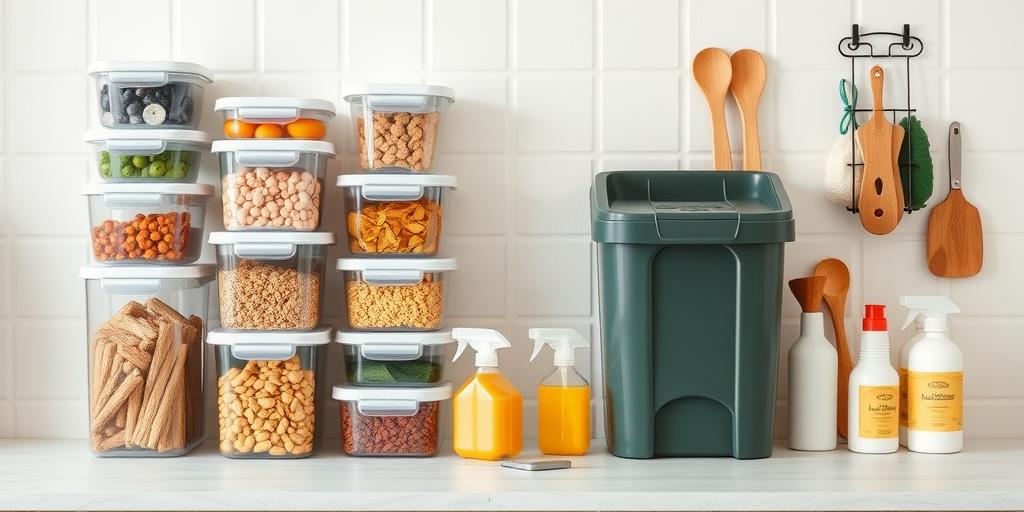Zero-Waste Kitchens: A Lifestyle Goal for 2025
As environmental awareness grows, many individuals are setting ambitious goals to reduce their environmental impact. One increasingly popular aspiration is achieving a zero-waste kitchen. This comprehensive guide outlines actionable strategies and practical tips to help you transform your kitchen into an eco-friendly hub by 2025.
Understanding Zero-Waste
Zero-waste is a philosophy and lifestyle that aims to minimize waste generation by focusing on reducing, reusing, and recycling materials. In the context of a kitchen, this means rethinking how we purchase, store, and dispose of food and other items.
Key Strategies for a Zero-Waste Kitchen
1. Plan Your Meals
Effective meal planning is crucial to avoid food waste. Before heading to the grocery store, take inventory of what you already have and create a meal plan for the week. This reduces the likelihood of buying unnecessary items that may end up spoiling.
2. Shop Smart
- Buy in Bulk: Purchase items like grains, nuts, and seeds from bulk bins using reusable bags or containers.
- Choose Products with Minimal Packaging: Opt for products with recyclable or compostable packaging. Avoid items wrapped in excessive plastic.
- Support Local Farmers: Shop at farmers’ markets for fresh, seasonal produce. This reduces transportation emissions and supports local agriculture.
3. Proper Food Storage
- Use Reusable Containers: Invest in glass or stainless steel containers to store leftovers and prepped ingredients. Avoid single-use plastic bags and wraps.
- Learn Proper Storage Techniques: Different foods require different storage conditions to maximize their shelf life. Research best practices for storing fruits, vegetables, and other perishables.
- Rotate Your Stock: Practice the “first in, first out” (FIFO) method to ensure older items are used before they expire.
4. Composting
Composting is an effective way to divert food scraps from landfills. Start a compost bin or vermicomposting system to break down organic waste into nutrient-rich soil.
- What to Compost: Fruit and vegetable scraps, coffee grounds, tea bags, eggshells, and yard waste.
- What to Avoid: Meat, dairy, oily foods, and diseased plants.
5. Reduce Single-Use Items
- Reusable Utensils and Dishware: Use reusable utensils, plates, and cups instead of disposable options.
- Cloth Napkins and Towels: Replace paper napkins and paper towels with cloth alternatives.
- Reusable Shopping Bags: Always bring your own shopping bags to the store.
6. DIY Cleaning Products
Many commercial cleaning products contain harmful chemicals and come in plastic packaging. Make your own eco-friendly cleaning solutions using simple ingredients like vinegar, baking soda, and lemon juice.
Challenges and Solutions
Transitioning to a zero-waste kitchen can present challenges, but with creativity and determination, these obstacles can be overcome:
- Limited Access to Bulk Stores: Explore online retailers that offer bulk options with minimal packaging.
- Time Constraints: Start with small, manageable changes and gradually incorporate more zero-waste practices into your routine.
- Family Resistance: Educate family members about the benefits of zero-waste living and involve them in the process.
Conclusion
Achieving a zero-waste kitchen is an ambitious but attainable goal for 2025. By adopting these strategies, you can significantly reduce your environmental footprint, save money, and create a healthier living space. Start small, stay consistent, and celebrate your progress along the way.
